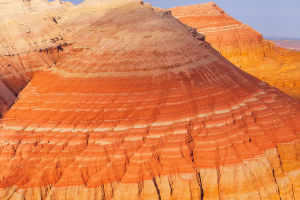Enigmatic Mount Fuji
Mount Fuji is the highest peak in Japan, standing at an altitude of 3,777m.
It is also a UNESCO World Heritage Site and holds immense popularity among both the Japanese and international communities.
However, there are several lesser-known stories about this iconic mountain that are worth exploring.
1. Mt. Fuji's Original Name:
In the past, Mount Fuji was referred to as "Fuyama" in Japanese kanji. This name signifies the uniqueness of the mountain, emphasizing the difficulty in finding a comparable peak elsewhere.
The concept behind "Mount Fuji" implies that the snow on its peak never ceases to exist. While there are various pronunciations and origins for the name, the authentic origin of Mount Fuji's name remains a subject of debate.
2. The Symbolism of "Red Fuji":
During late summer and early autumn, Mount Fuji often appears red when illuminated by the morning sun, earning it the name "Red Fuji."
This captivating view can only be witnessed a few times each year, leading the Japanese to consider it a symbol of good luck, prosperity, and success. Enchanting folklore even suggests that capturing a picture of "Red Fuji" grants extraordinary fortune.
3. The Origin of the Exclamation "Dokkoisho":
The exclamation "dokkoisho" is commonly used in Japan when lifting heavy objects or standing up. Interestingly, its roots can be traced back to Mount Fuji.
4. The Private Summit of Mount Fuji:
Mount Fuji straddles the Shizuoka and Yamanashi prefectures, leading to occasional disputes over its ownership.
However, the summit area above the 8th station is not state-owned nor the property of either prefecture. Surprisingly, it is privately owned by Fujiyama Hongu Asama Taisha, an entity with over 1,300 branches throughout Japan.
These intriguing anecdotes and lesser-known facts about Mount Fuji merely scratch the surface of the vast folklore and stories surrounding this iconic mountain. It is our hope that delving into these tales will ignite a deeper interest in Japan, and Mount Fuji, and foster a renewed appreciation for this captivating and culturally significant Japanese treasure.


